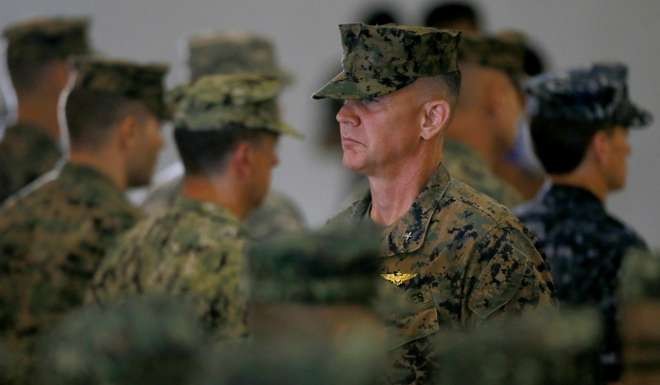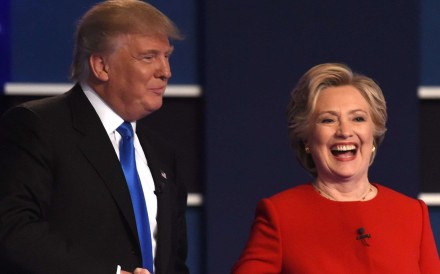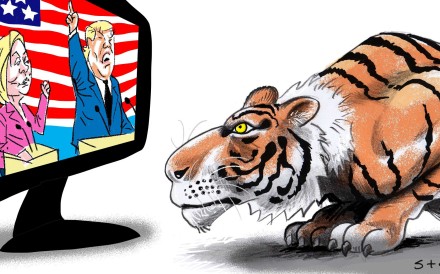Mark Valencia says four months after the landmark tribunal ruling against China on South China Sea issues, it is America’s presence – and welcome – in the region that is suddenly looking shaky
PUBLISHED : Wednesday, 05 October, 2016, 5:08pm
UPDATED : Wednesday, 05 October, 2016, 7:21pm

The current trends are not auspicious for the US. Indeed, we may be seeing a slow but sure seismic shift in US political standing in the region.
This has been invigorated by the region’s reaction to US involvement in the South China Sea issues and thePhilippine-China arbitration decision. Ironically, the US encouraged – some say supported – the Philippine legal case against China. It certainly supported the panel’s ruling against China and urged China to adhere to it. But China has rejected the decision and, perhaps to the chagrin of the US, the Philippines is not pushing China to adhere to it.
Under pressure from China, new President Rodrigo Duterte has turned against US military involvement in the Philippines. After a series of anti-US statements, he said a scheduled joint military exercise would be the last because China did not want it.

Is Philippine President Duterte playing the United States and China?
When US defence secretary Ashton Carter visited the Philippines in April, he said his visit opened “a major new era in a longstanding alliance ... I’m proud to say this alliance is as close as it’s been in years”. This statement may now be seen as a bad joke in the corridors of the Pentagon and the State Department. Obviously, Carter and key figures in the Obama administration did not foresee the sea change in the relationship that Duterte would bring. Duterte has subsequently threatened to terminate the 2014 Extended Defence Cooperation Agreement that allows the US to rotate troops into the Philippines for extended stays and to operate facilities on Philippine bases.
The US has tried to deny there is any problem with the Philippine alliance but it is clear that it is whistling by the graveyard. Indeed that graveyard may eventually become the resting place of the US pivot to Asia – or at least its supposed welcome by the region. China has diplomatically out-duelled the US behind the scenes by enticing Cambodia and Laos to block any mention of the arbitration decision in the joint statements emanating from the Asean meeting in July, and the Asean and East Asia summits in Vientiane, Laos, last month. China also blocked its mention at the G20 meeting in Hangzhou (杭州) just before the Vientiane summits.
Has Beijing really ‘turned the page’ on South China Sea ruling?

Why does Asean pretend to be united when it’s not?
Meanwhile, America’s relations with its other Southeast Asian ally, Thailand, have deteriorated sharply due to its criticism of the military government. Despite pressure from the US, none of its regional allies and friends has agreed to join it in “freedom of navigation” exercises in the sea. Even Japan has retracted its seeming commitment to do so.
But instead of acknowledging the reasons for its failings – US heavy-handedness and China’s successful counter diplomacy, to pick two – the US has doubled down. Indeed, it continues to refuse to recognise China’s influence in the region and to squeeze middle-of-the-road nations. For the US, when it comes to China, “you are either with us or against us”.
For the US, when it comes to China, ‘you are either with us or against us’
In a September 29 speech in San Diego on his favourite setting – an aircraft carrier, the ultimate symbol of American naval power – Carter said the US will “sharpen our military edge ... to remain a dominant power in the region”. He reasserted that the US has an “ironclad” alliance with the Philippines and touted strong bilateral relations with Thailand, Japan, South Korea and Australia. He announced a “third wave” of the Pentagon’s rebalance to the Asia-Pacific.
According to Carter, the first step involves more frequent deployment of US forces to the region “to help us solidify military-to-military relationships, strengthen security cooperation and enhance deterrence”. He didn’t say against whom or what, but it seems obvious.
Other steps involve increasing US Coast Guard engagement with members of the Association of Southeast Asian Nations and cooperative development and sharing of new cyber capabilities and maritime surveillance technologies – that is, have Asean countries facilitate US intelligence gathering. Moreover, US Air Force secretary Deborah James has said the air force will probably conduct new freedom of navigation flights in the region. All this means that regional states like Australia, Malaysia, Singapore and Indonesia are caught in a political dilemma and are recalibrating their foreign policy as they try to satisfy both China and the US.

How China is using its Global Times attack dog to intimidate Singapore
Singapore – which has or had a special relationship with China – is the latest Asean member to get publicly caught in a political pickle. The People’s Daily said in an editorial that Singapore “has obviously taken sides over South China Sea issues while emphasising it does not”.
Countries will make such decisions based on their own national interest, not some vague abstract principle like “upholding the international order”.
For Australia, Malaysia and Singapore, any pretence of military neutrality is already compromised by their facilitation of US intelligence-gathering flights and hosting of the rotational deployment of US warships and – in the case of Australia – even troops. This presumably makes them potential targets for China. Indonesia is still trying to placate both sides but is slowly leaning militarily towards the US despite its claims to non-alignment.
It is at this juncture that the US needs to be careful and realistic. These countries will make such decisions based on their own national interest, not some vague abstract principle like “upholding the international order”.
On September 30, Carter said in a speech in Hawaii where he was co-hosting, with Asean chair Laos, a meeting of the grouping’s defence ministers that “the United States stands by the matter of principle involved here”, adding that it is a principle of adherence to the law and the avoidance of militarisation and coercion.
He said this without a trace of irony, given that the US has not ratified the UN Convention on the Law of the Sea, and has boosted its military presence in the region, and continues to do so.

As Obama leaves Asia for final time as president, his successor will still have much to do
In San Diego, he cocked a snook at China by saying that “freedom of navigation may also be upheld in part, by joint and networked patrols”. In Hawaii, he explained that “a principled and inclusive security network” will be built to “resolve disputes peacefully; ensuring countries can make their own choices free from foreign coercion and intimidation; and preserving the freedom of overflight and navigation”. This must have made Beijing bristle and was presumably designed to do so.
While the current situation is a political stand-off between those countries leaning towards China and those leaning towards the US, it could change rapidly if either overplays its hand. This is the lesson of the Duterte phenomenon. The worm can turn – and quickly, based on national interest.
US and China need more soft power, not military hardware, to resolve their differences
For the US, wiser heads may prevail – at least temporarily. Perhaps in recognition of its role in creating a quandary for Southeast Asian nations and even for its own foreign policy difficulties, the lame-duck Obama administration wants to stabilise ties with China in its final months in office. To this end, the Pentagon has supposedly been barred from publicly using the description of “great power competition” in reference to military challenges from China.
If true, this is hopefully a sign of a rethink and appropriate adjustment of US policy in Asia.
Mark J. Valencia is adjunct senior scholar at the National Institute for South China Sea Studies, Haikou, China
This article appeared in the South China Morning Post print edition as:
Outplayed in Asia?





No comments:
Post a Comment